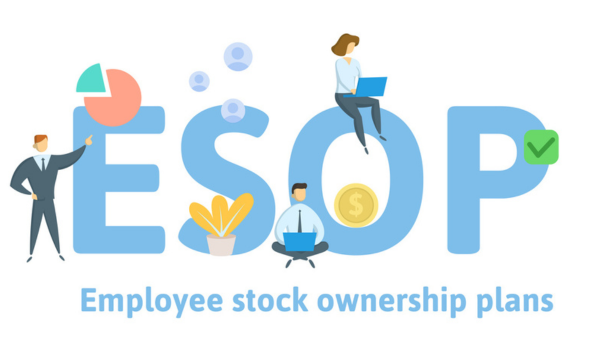10-10-2024 |
ESOP SELLER PERSPECTIVES – UNDERSTANDING SECTION 1042 IN ESOP SALES
By: Cynthia Boyle Lande & Drew D. Larson

Understanding Section 1042: A Tax-Efficient Strategy for ESOP Sales
In the realm of Employee Stock Ownership Plans (ESOPs), Section 1042 of the Internal Revenue Code offers a significant tax advantage for business owners looking to sell their company to an ESOP. This provision allows for the deferral of capital gains taxes upon the sale of qualified employer securities to an ESOP—a beneficial strategy that can have substantial implications for both sellers and the company's employees. With careful planning, in certain situations the deferred gains can potentially be eliminated when combined with a stepped-up basis on death, making a sale to an ESOP one of the most tax-favorable exit strategies for founders and business owners.
What is Section 1042?
Section 1042 is a provision in the tax code that enables business owners who are selling shares to an ESOP to defer the capital gains tax that would typically apply to the sale. To qualify, the company must be a C-corporation and the proceeds from the sale must be reinvested in Qualified Replacement Property (QRP), which primarily consists of stocks or securities of domestic operating corporations. In general, mutual funds do not qualify as QRP, making diversification of proceeds more complicated.
Tax Deferral Benefits
The primary advantage of Section 1042 is the ability to defer the capital gains tax on the sale of qualified employer securities. When a business owner sells to an ESOP and reinvests the proceeds in QRP, they can postpone paying taxes on the capital gains from the sale. This deferral can be particularly advantageous for owners looking to transition out of their business while maximizing their after-tax proceeds. Mechanically, the purchase of QRP is similar to the acquisition of replacement real estate in a Section 1031 exchange, with the QRP functionally receiving a substituted basis equal to the original basis in the C-corporation stock sold to the ESOP.
Requirements and Limitations
While Section 1042 presents a valuable tax-deferral opportunity, certain criteria must be met to qualify for this provision:
- C-Corporation Status: The selling company must be a C corporation at the time of the sale to the ESOP.
- Sale to an ESOP: The sale must involve qualified employer securities sold to an ESOP that holds at least 30% of the company's stock immediately after the sale. A sale to an ESOP owned company, instead of to an ESOP itself, will not qualify.
- Reinvestment in Qualified Replacement Property (QRP): The proceeds from the sale must be reinvested in QRP within the specified time frame to defer the capital gains tax.
- Strict Time Limits: The reinvestment in QRP must occur within a limited period—typically, the earlier of 12 months after the sale or the due date (including extensions) of the seller's tax return for the year of the sale.
Downsides of Section 1042
While the tax benefits of Section 1042 can be powerful, in our experience many owners decide not to pursue Section 1042 treatment for a number of reasons.
Many companies are already S-corporations, so qualifying for Section 1042 requires the company to convert to a C-corporation for at least 5 years. This can substantially increase the tax and cash cost to the company going forward, especially when compared to being a 100% ESOP owned S-corporation. Many owners are not willing to put that increased burden on the company.
Many owners also dislike the limited investment options of QRP, especially if they want to purchase real estate or similar assets. There are workarounds to such limitations, but they often add a lot of complexity that owners do not want to deal with going forward.
Other available tax benefits or strategies, including Section 1202 and charitable gifting prior to the sale, can also help manage the tax liability from the sale and reduce the comparative benefit of Section 1042.
Conclusion
Section 1042 of the Internal Revenue Code offers a compelling tax-deferral opportunity for business owners looking to sell their company to an ESOP. By taking advantage of this provision, owners can defer capital gains taxes, reinvest in Qualified Replacement Property (QRP), and provide a path for their employees to become stakeholders in the business. Ultimately, this strategy supports the transition of ownership while potentially fostering a more committed and engaged workforce within the ESOP-owned company.
Learn More About ESOPs
At BrownWinick, our experienced ESOP team is dedicated to guiding you through every step of establishing and maintaining your ESOP. To learn more, visit our webpage bwesop.com or contact your BrownWinick ESOP attorney. Our ESOP team would also be happy to provide a free initial consultation about whether an ESOP may be a fit for you and your business.


